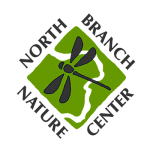A Changing Landscape
The Nature Center's History
Or check out our newsletter article about North Branch Nature Center's organizational history.
Or watch Landscape Historian Samantha Ford's presentation about the history of the NBNC property below.
Abenaki Language
Nikônkôgoagik: ancestors (literally "the ones who were before us."
Panel Text - English
Are you curious who lived here and what this place looked like before it was the Nature Center? This land has been inhabited by humans for almost 12,000 years, starting with the ancestors (nikônkôgoagik) of today’s Abenaki people, who arrived soon after the end of the last Ice Age and have been living in this area ever since. Since the Laurentide Ice Sheet receded, the landscape has gone through many transitions, from tundra, to forest, to farm, and now back towards forest. These illustrations show what this place likely looked like at different times in the past.
Nikônkôgoagik means ancestors in Abenaki, or literally "the ones who were before us."
Panel Text - Spanish
Un Paisaje Cambiando
¿Te da curiosidad saber quién vivió aquí, y cómo se veía este lugar antes que fuera el Nature Center (Centro de Naturaleza)? Esta tierra ha sido habitada por humanos por casi 12,000 años, empezando con los ancestros (nikônkôgoagik) de la gente Abenaki de hoy, quienes arribaron un poco después de haber terminado la última era de hielo y que han vivido en esta área desde entonces. Desde que se redujo la placa de hielo Laurentide, el paisaje ha pasado por muchas transiciones, de tundra a bosque a granja, y ahora de vuelta hacia bosque. Esta ilustración enseña cómo puede haberse visto en diferentes tiempos en el pasado.
La llegada de gente noindigena en esta área en los años 1,600 y 1,700 llevó a la despoblación de gente indigena por causa de enfermedad, dispersión, despojo, expulsión y violencia; y un cambio mayor en la relación humana con el manejo de la tierra.
Nikônkôgoagik significa ancestro en Abenaki, o literalmente, los que estaban antes que nosotros.
12,000 Años Atrás (AA): Tundra
10,000 AA: Bosque Boreal
6,000 AA: Bosque Templado Cálido
3,000 AA: Bosque de Madera Dura del Norte
1790s-1990s: Tierra de Cultivo Deforestada
Panel Audio - English
Panel Audio - Spanish
(Translations by Onel Salazar)

713 Elm Street
Montpelier, Vermont 05602
(802) 229-6206
Hours: Center Open Monday-Friday 9-4
Trails Open 24/7


